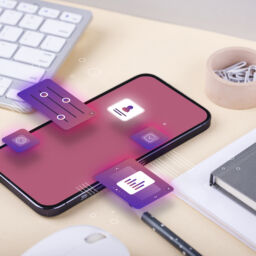
You often hear the words UI and UX tossed around in tech circles, but what do they mean? UI stands for User Interface. It means all those visual elements with which a user interacts on a website or an app: buttons, icons, and various screens. In contrast, UX stands for User Experience, covering the interaction one has with a product and how it makes a person feel.
While UI designers make things look good and usable, UX designers aim to shape how a website or an app will be used, making it smooth and pleasurable. Even though UI may affect UX, they are two very different fields, and each designer has a significant role in building a great user experience.
The internet is full of resources, so structure the journey logically with the help of B. Tech IT Colleges in Coimbatore.
Your Way to Success: How to Become a UI/UX Designer?
1. Getting Started: Mastering the Basics of Designing Good UI/UX
Mastering UI/UX requires learning a few basic rules: as you know, the ABCs of design. Colors, much like paint, set the mood. Fonts have varied ways of writing. They make reading easy or hard. Layout is similar to organizing your toys in an organized fashion; then, it’s easy to find and use them. Once you learn those things, nice-looking designs that are user-friendly can be created.
2. Designing for People: User-Centered Design
Designing for people means listening to what they want. Imagine you’re baking a birthday cake – you’d ask what flavor they like. In design, we do something similar: we chat with the people using our designs to see what they want and don’t. This helps us come up with designs people would like using and find useful.
3. Showing Your Work: Portfolio
Think of a portfolio as simply a collection of your best work. It is like bringing out the best of your sketches or school projects. In every other creative field, UI/UX designers usually have a portfolio showcasing their best designs. This is not only helpful when searching for jobs but also when pursuing freelance opportunities. With a good portfolio you can solve design problems and derive attractive graphical solutions.
4. Making Things Look Good: Visual Design
It’s like beautifying your room; in UI/UX design, it’s making websites and apps look appealing. This involves a selection of nice colors and fonts, just like choosing nice paint and comfortable furniture for one’s room. And when things look nice, people will use them more.
5. Learning and Growing: Education and Skill Development
If you want to be a successful UX/UI designer, then you must develop yourself every moment. It’s like playing a game: you start with easier levels, and then you improve with practice. The more you learn and the more you practice, the better you will be at design. But at the core of it, the answer to how one can become a successful UI/UX designer is education itself.
It’s the role of the UX Designers.
You may be left wondering: How do user experience designers help in the creation of a product? Let’s look at the life of a user experience designer.
What Does a UX Designer Do?
UX designers build conditions of interaction that enable the user to have a good experience with a product; a product should be useful, usable, user friendly. They do this by researching their users, making personas, wireframing, prototyping their product, testing it with users, and then refining it.
What does a career in UX look like?
While the field of UX offers ample opportunity for professional growth, your unique UX career path will depend on your skills and interests. Common UX career tracks include:
The managerial track: With enough experience, you will find opportunities to lead projects and teams before progressing to a formal management role. UX Managers typically manage workers, budgets, and project timelines. It will put you on the trajectory for executive appointments.
Subject matter expert track: As you gain technical expertise, the opportunity to progress into a senior role without managing other workers is available. It is ideal for designers who want to sharpen their craft and perform design work daily. It can lead to positions such as “Principal Designer”.
Freelance – Provided you have built a good network of clients, you can become an independent UX designer. It is tricky in terms of generating new business. It’s a niche career track. The evolution of UX has opened up plenty of room for specializations in the field. For example, the area of UX research became a field in itself—an excellent specialization for people who are really into user behavior patterns and the psychological bits of the UX design process.
If any of you are searching for the best institution to realize your dreams of becoming a UI/UX designer, look no further than the B. Tech Information Technology Colleges in Coimbatore. If you’re ambitious of building a career in UI/UX design get the right support with nominal fees structure. So, if you have an affinity towards technology, love solving problems, and aim to craft exceptional digital experiences—then all of the UI/UX design world is yours! With dedication and a bit of creativity, supplemented with continuous learning, you can make people fall in love with your creations. This can set you right on the path to a fulfilling career in UI/UX design. Happy designing!















